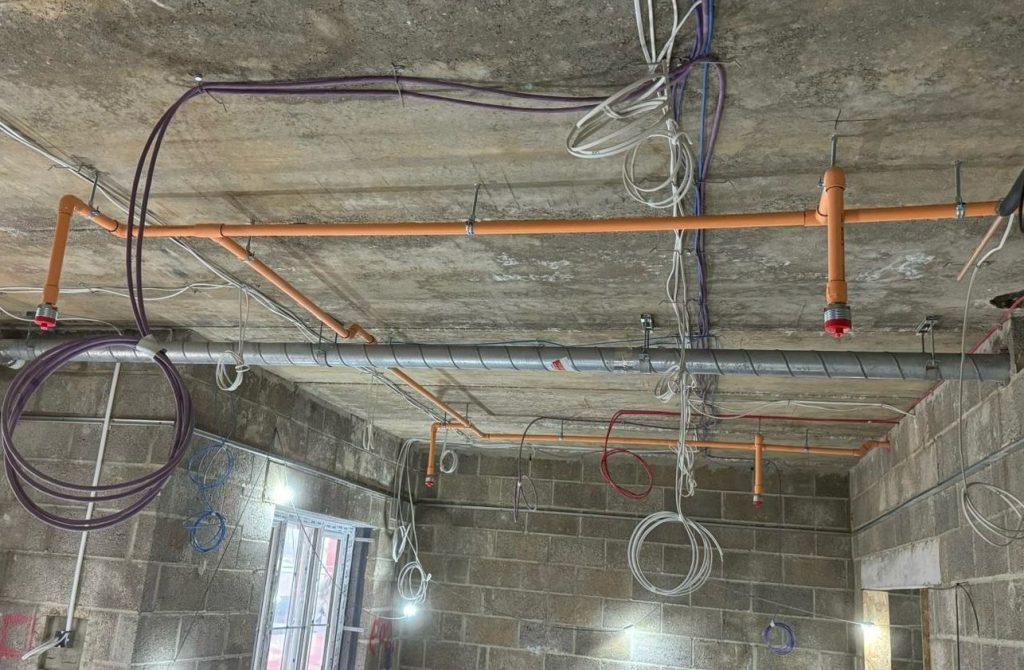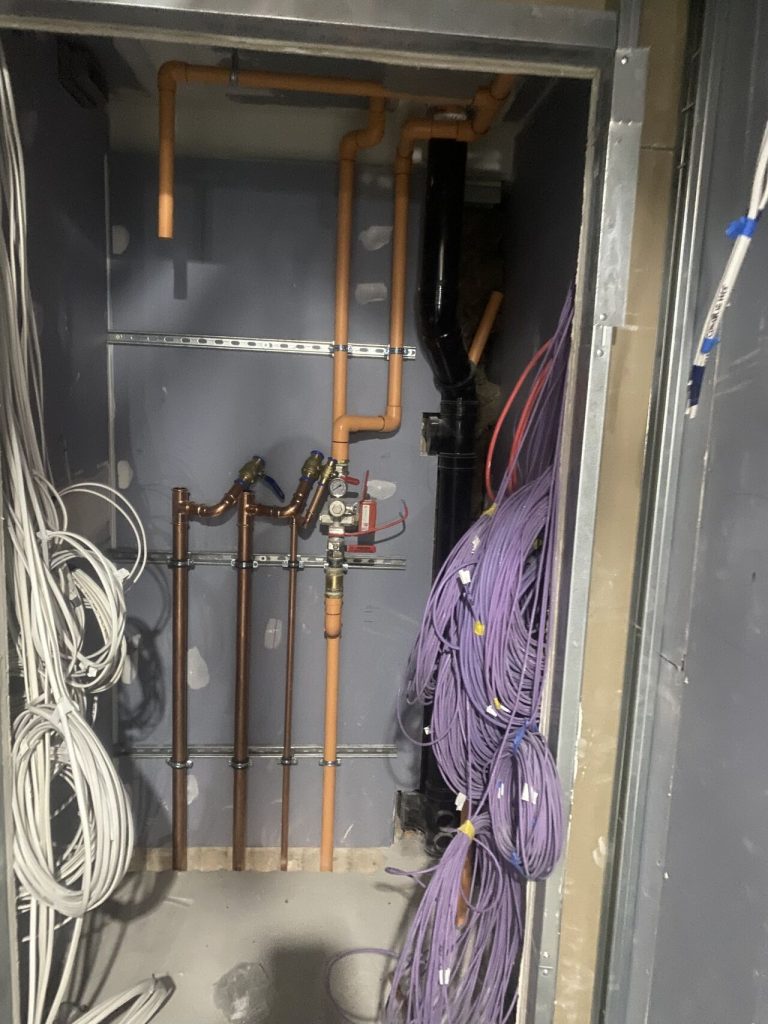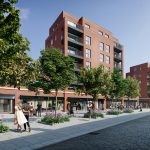How a Fire Sprinkler System Installation Works
Fire sprinkler systems are a vital part of keeping yourself, your property and others safe. A system which is installed following all legislations and regulations will considerably increase safety.
But you might be wondering how this process works. How can we ensure that your system is optimised to provide the best possible protection, and properly maintained to keep you safe? We’re here to answer your questions regarding fire sprinkler system installation.
Types of residential and commercial fire sprinkler systems
There are a few different types of fire sprinkler systems to be aware of:
- Wet Pipe Sprinklers – The most common system, wet pipe sprinklers are always filled with water, allowing immediate discharge upon activation. This type is best for places where freezing temperatures aren’t a concern, like offices or schools.
- Dry Pipe Sprinklers – Designed for colder areas, dry pipe sprinklers use pressurised air or nitrogen instead of water. When triggered, the air releases, allowing water to flow in and discharge from the sprinkler heads. Whilst this does cause a slight delay in activation, it is necessary to prevent pipes from freezing in colder weather.
- Pre-action Sprinklers – This hybrid system takes aspects of wet and dry pipe systems and is used where water damage would be highly damaging, (libraries, data centers, etc). Activation requires both fire detection and heat at the sprinkler head, reducing the risk of accidental discharge.

Following regulations for fire sprinkler systems
Following regulations for fire sprinkler systems means having a depth of understanding regarding a couple of different British Standard guidelines.
Residential and domestic
The first of which is known as the ‘BS 9251,’ which outlines requirements around the design, installation and maintenance of fire sprinkler systems in residential and domestic buildings. The primary focus of these regulations is to preserve life in the event of residential fires, but they also help to preserve property too.
The regulations cover aspects such as system design, components, water supplies and head placements. They also place requirements regarding proper testing and maintenance to ensure the system maintains its effectiveness.
Commercial and industrial
Another important regulation it can be vital to follow are the ‘BS EN 12845’ standards. These regulations are designed for sprinkler systems in commercial, industrial and public buildings. Setting comprehensive guidelines for the entire lifespan of a sprinkler system, these standards include hazard classification, water flow requirements, required components and much more.
As a sprinkler system installer, following these guidelines to a tee has allowed Pyrotech Sprinklers to deliver a number of successful sprinkler installation projects, as our project portfolio demonstrates.
We offer sprinkler installation for the following buildings:
- Student accommodation
- Residential apartments
- Care homes
- And many more!
Get in Touch for a Legally Compliant Sprinkler System
How fire sprinkler systems are designed and planned in commercial buildings
Fire sprinklers systems for commercial buildings are designed and planned by following BS EN 12845 guidelines closely, ensuring maximum protection and safety for the building and those inside it.
Installers should work alongside building owners and construction managers to create the design and plan for a sprinkler system. This is because sprinkler systems are designed with safety and aesthetics in mind, ensuring that heads are spread well enough to ensure adequate coverage, but also that they don’t ruin the look and feel of a building.

How are fire sprinkler systems installed?
Sprinkler system installation with Pyrotech Sprinklers begins with:
- A comprehensive inspection of the building, including what type of building it is, and what unique risks it may have. From here, we create a design tailored to the building and its purpose, ensuring total compliance with fire safety regulations.
- Once the design is approved, our engineers will begin to install a series of pipes throughout the property, hidden in ceilings or walls where possible to minimise aesthetic disruption. Sprinkler heads are then specifically positioned to ensure complete coverage in the event of a fire. The pipework will either be filled with water or pressurised air, depending on the type of system.
- To ensure adequate water flow, we connect your system to mains water supplies or to a dedicated water tank, depending on the layout of the building and the water pressure needs. We’ll also install control valves, alarms and monitoring equipment.
- Before completion, every installation is rigorously tested so we can be sure it performs as expected, and provides the level of coverage required by law. We’ll also provide you with all the required legal documents which prove your legal compliance under fire safety regulations.
Following installation, we schedule regular maintenance and testing, giving you the peace of mind that your system remains effective, ensuring lasting safety.



